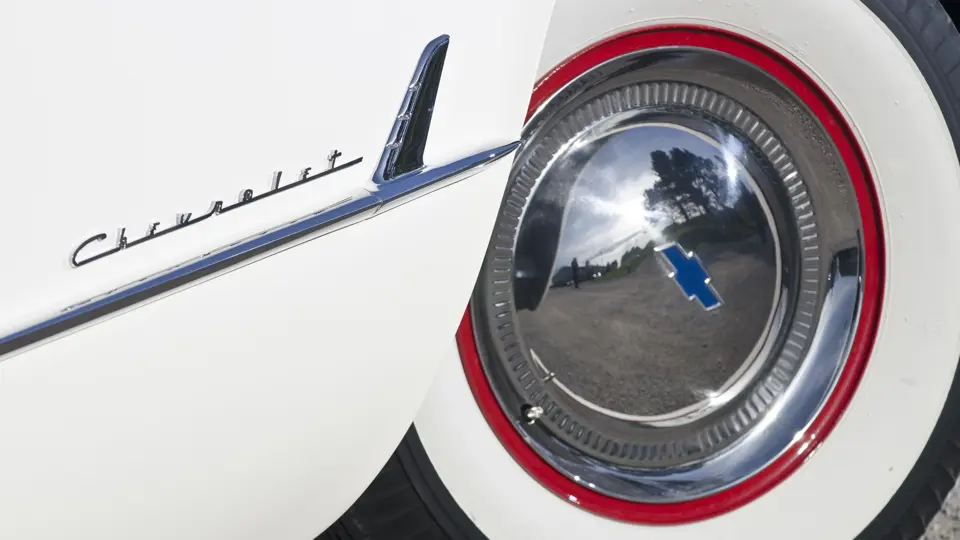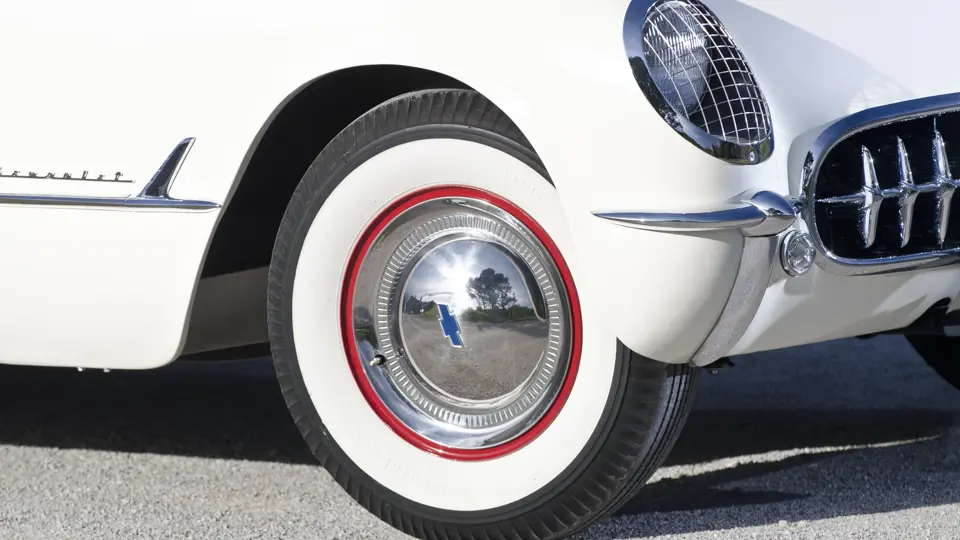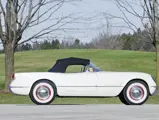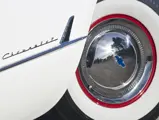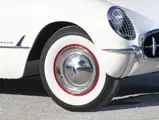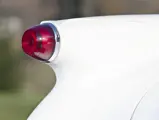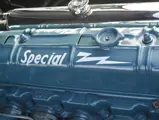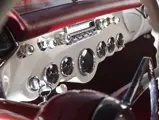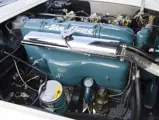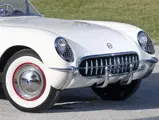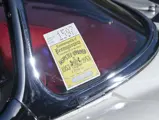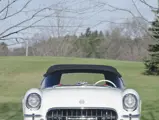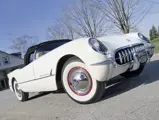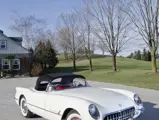150 bhp, 235.5 cu. in. “Blue Flame” OHV inline six-cylinder engine, three one-barrel Carter carburetors, Powerglide two-speed automatic transmission, independent front suspension with unequal-length A-arms and coil springs, live rear axle with semi-elliptic leaf springs, and four-wheel hydraulic drum brakes. Wheelbase: 102"
• The fifth Corvette built and one of the first three examples ever sold to the public
• One of 300 produced for 1953; unique early production features
• Accompanied by copies of original sales invoice, GM correspondence and more
• Painstakingly restored to NCRS Top Flight award-winning standards
• A fascinating document of Corvette’s earliest transition from show car to production
From the start, the Chevrolet Corvette was truly unique. Based on the EX-122 concept of
1952, the Corvette remains one of the few GM Motorama designs with their space age, show-car styling virtually unmodified for production. Its highly anticipated early-1953 introduction in the ballroom of New York’s Waldorf=Astoria drew over 300,000 spectators, and production commenced in Flint, Michigan on June 30, 1953.
While this beautifully presented, multiple award-winning first-year example is one of about 200 survivors out of total 1953 production of just 300 units, it is especially significant as experts strongly believe this to be one of the first three Corvettes ever sold to the public! Bearing serial number 5, it was purchased on July 16, 1953 from Wilmington, Delaware’s Diver Chevrolet by Crawford Greenewalt, the noted chemical engineer, DuPont Company President (1948 – 1962) and Chairman of the Board (1962 – 1967) as a gift for his wife, Margaretta DuPont Greenewalt. Interestingly, Serial Number 4 was sold to Mr. J. Spencer Weed, the head of the Grand Union grocery chain, and Corvette Number 6 was sold to Mr. H.B. DuPont.
According to an interview conducted during the 1980s, once Corvette Number 5 was assembled, GM Styling Chief Harley Earl drove it to a friend’s Ford dealership, and after that it made its way to the Ford Motor Company Engineering Department, well before many of Chevrolet’s own staffers saw the Corvette themselves. In mid-July 1953, Corvette Number 5 was assigned to Chevrolet’s Eastern Zone, and it was shown to select Philadelphia, Pennsylvania-area Chevrolet dealers before it was delivered to Diver Chevrolet in Delaware prior to its sale to the Greenewalts.
Three-time Indianapolis 500 champion driver Mauri Rose, who was then with Chevrolet Engineering, inspected Corvette 5 at Diver Chevrolet, as well as cars 4 and 6 at their respective dealers, to report on their build quality. Unfortunately, these early Corvettes were clearly “works in progress” with the production process and complex fiberglass body construction (from some 46 individual pieces) imposing a steep learning curve. As confirmed by Mr. Rose’s detailed four-page report on the cars, numerous “objectionable and in the writer’s opinion not commercially acceptable” deficiencies were found.
Clifford Diver, the son of Diver Chevrolet owner Frank W. Diver, echoed this during an interview conducted some years later. Interestingly, while a 10 percent discount was offered, the Greenewalts refused it and insisted on paying the full list price instead. Consequently, Diver Chevrolet added the amount of the discount back onto the invoice for the car.
The Greenewalts retained Corvette 5 until March 22, 1956, when they traded it in for a 1956 model. It passed through several owners until the late-1960s, when it was located in North Carolina in need of restoration. In about 1972, Ed Thiebaud, one of the first serious Corvette collectors and the founder of the Vintage Corvette Club, acquired the Corvette and moved it to Fresno, California, where he advertised it for sale as “One of the First Real McCoys” with a circa-1970 photograph, asking for “serious offers over $10,000.” In 1972 Randy Hickman purchased the Corvette, but its return to glory would have to wait until 1997, when John and Melanie Kocsis of Athens, Pennsylvania acquired Corvette 5. Over the next five years, they painstakingly researched and authentically restored the Corvette to its original condition.
Completed in 2003, in time for the Corvette’s 50th anniversary celebrations, the Corvette joined its sister car, Number 6, for the first time in 50 years at the 1953 Corvette Reunion during the Corvettes at Carlisle show, fittingly held on June 30—the exact date that Corvette production began. On July 16, 2003, 50 years to the day after it was first sold to the Greenewalts, Corvette Number 5 was judged at the Hershey, Pennsylvania NCRS National Convention. There, it achieved a score of 99.6% and Top Flight certification. In addition, the Corvette won the Ladies’ Choice award, and Mr. and Mrs. Kocsis received a specially etched trophy commemorating Number 5’s participation at the historic event. On June 27, 2004, the Corvette received Gold Certification from the National Corvette Certification Board.
Among its many interesting features, Number 5 is the last 1953 Corvette produced without an outside rear-view mirror, and it was one of the handful of early Corvettes fitted with a stainless-steel VIN tag, as opposed to the later aluminum version. This car was also built with a chrome speaker grille, and Corvettes 4, 5 and 6 were the only 1953 models sold to the public with basic chrome Chevrolet Bel Air hubcaps. The original frame for Corvette 5 is one of the 12 “pilot run” Corvette frames built, which were utilized for the Motorama cars, the engineering bucks and the first six production Corvettes. According to John and Melanie Kocsis, the frame for Corvette 5 is stamped #10 in two locations, the same as the number-stampings on the frame of Corvette Number 6.
As offered today from the current owner’s private collection, Corvette Number 5 retains an impressive, high-point presentation. Its document file includes copies of the original sales invoice from Diver Chevrolet to the Greenewalts, a copy of the invoice for their new 1956 Corvette showing the trade-in of the 1953 car, a copy of the internal GM memo from Mauri Rose and more. A fascinating artifact of the Corvette’s earliest days, it marks the quick transition of the Corvette from its GM Motorama show-stopping roots to a series-production car for public sale. It is one of the first three Corvettes ever sold, and as such, it ranks as one of the most important early Corvettes in existence today.






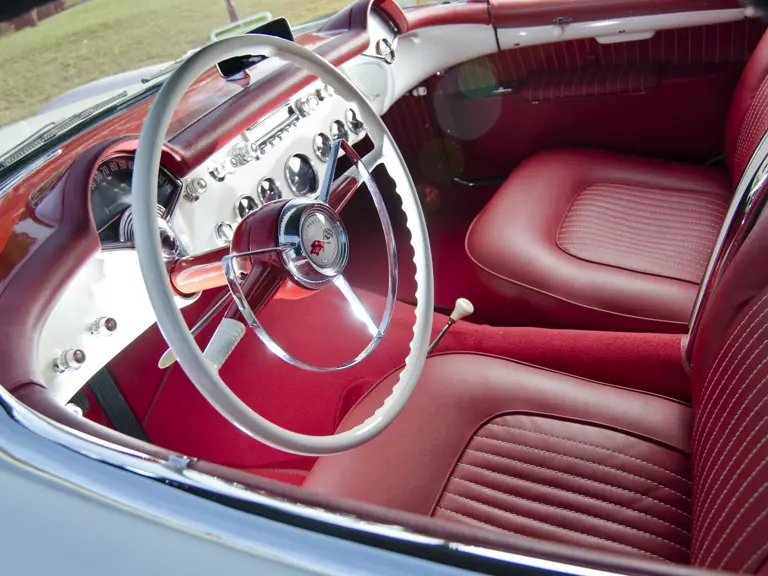
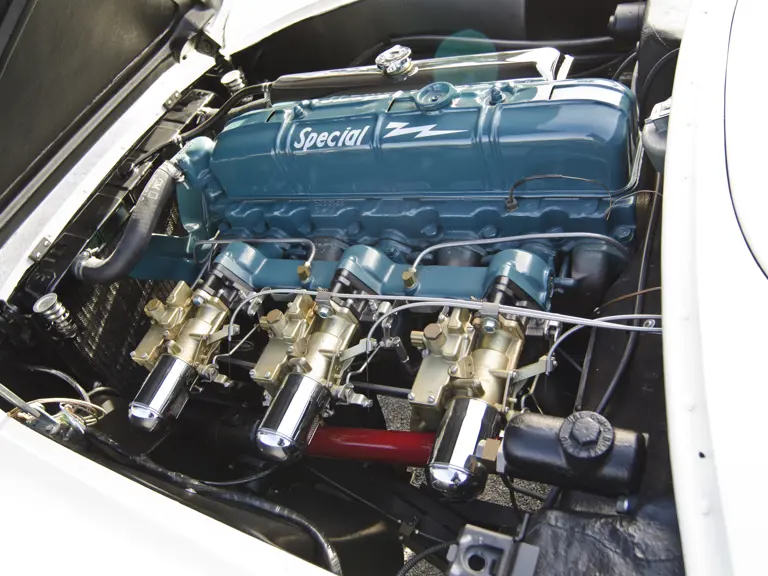
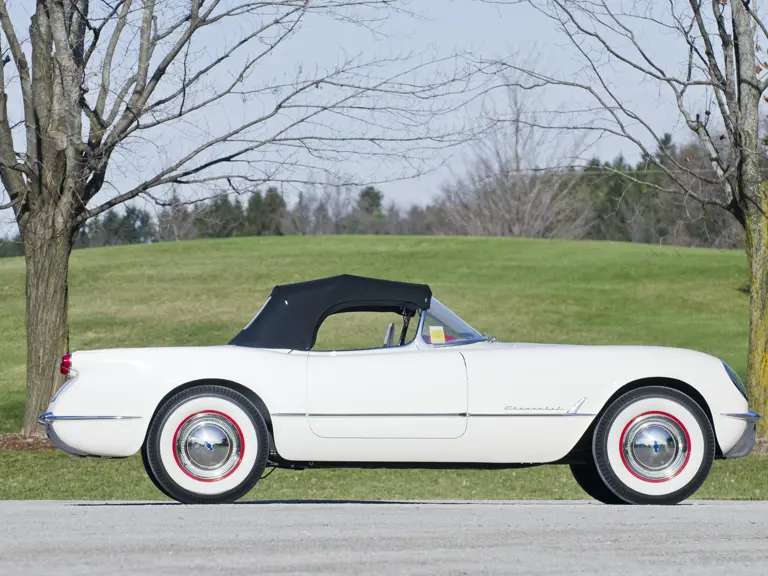
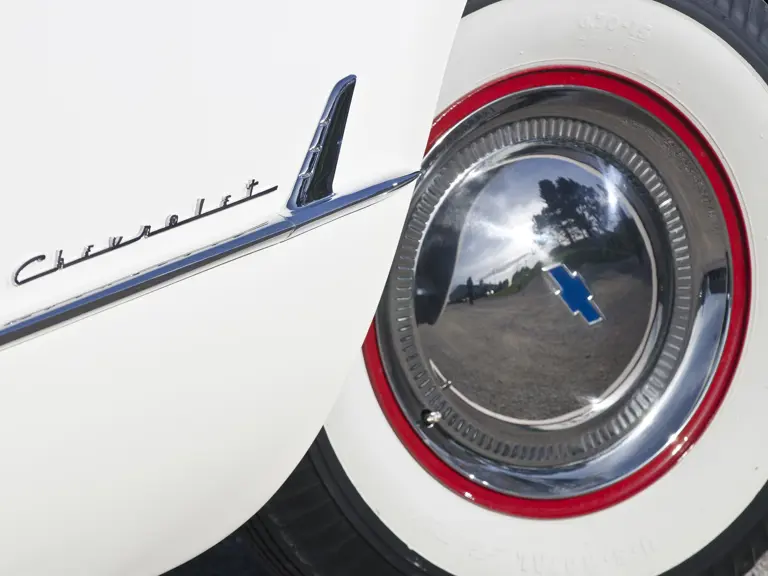
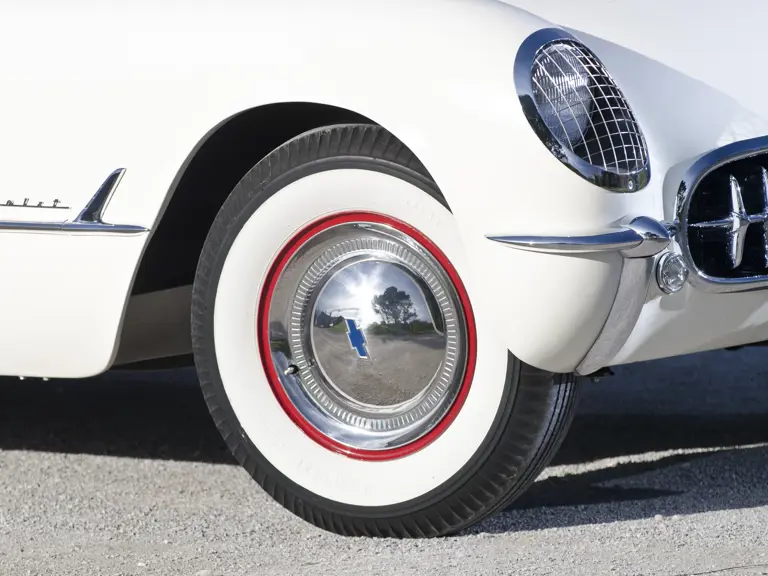

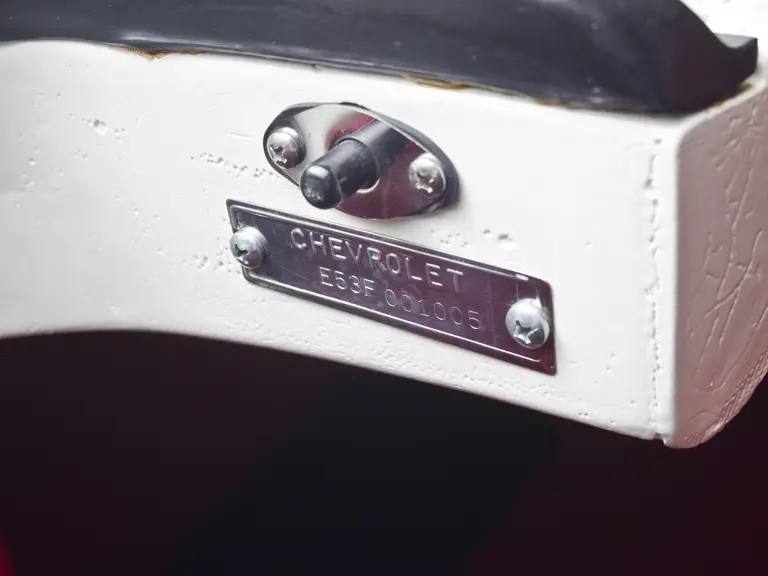



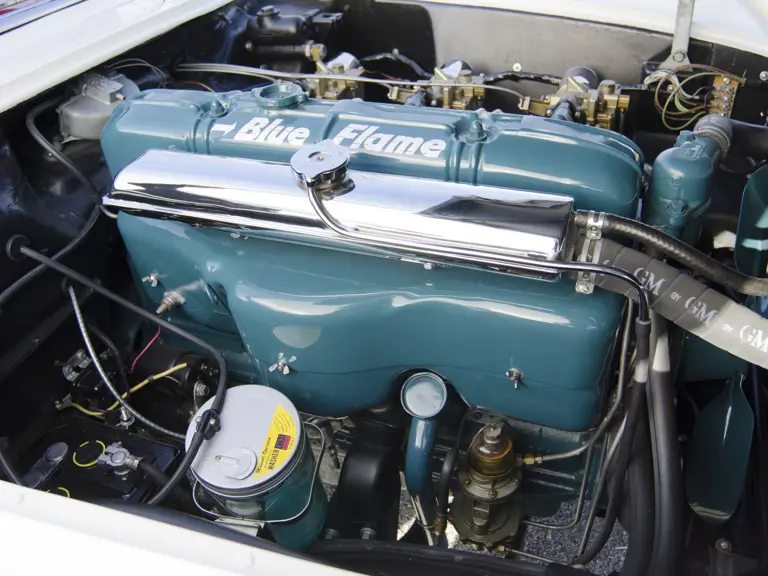

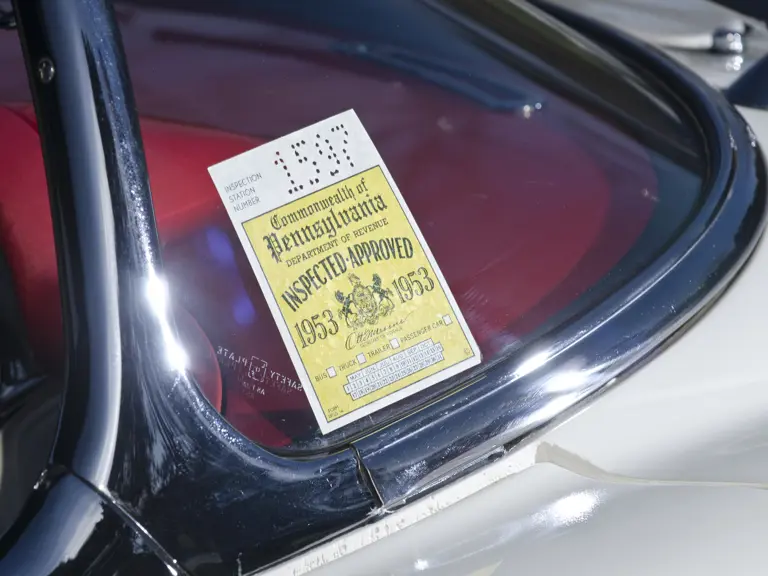
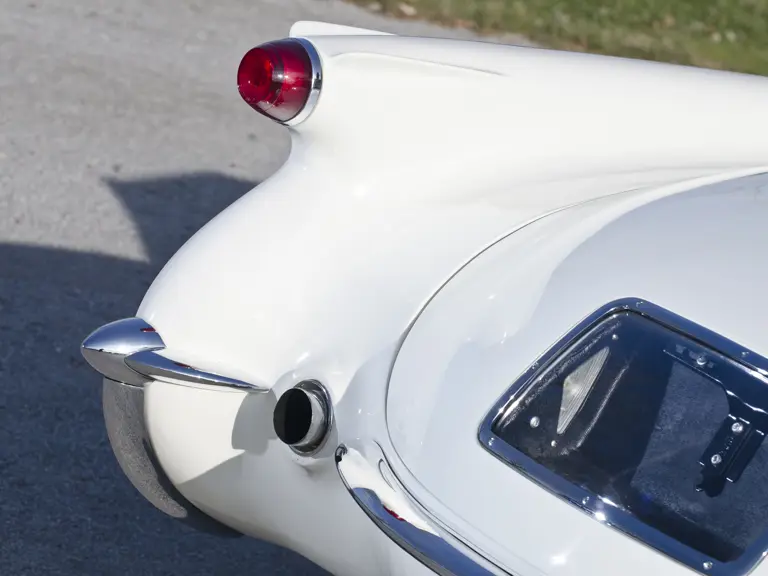
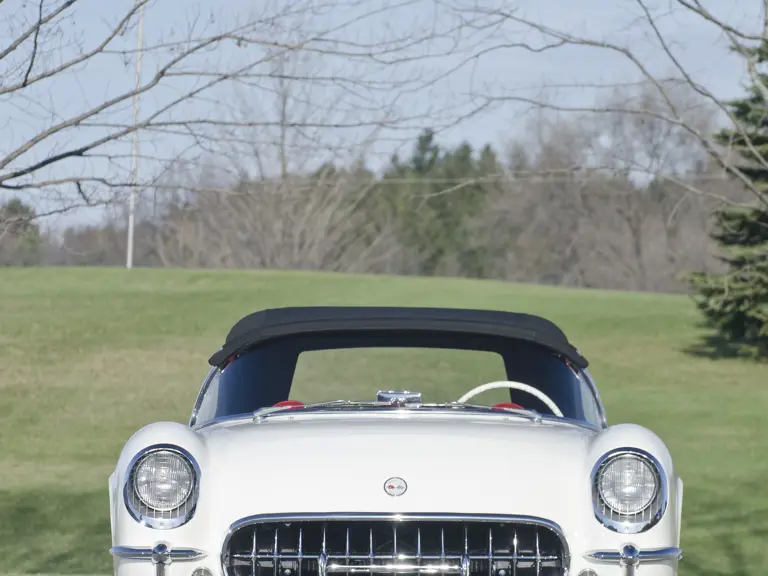
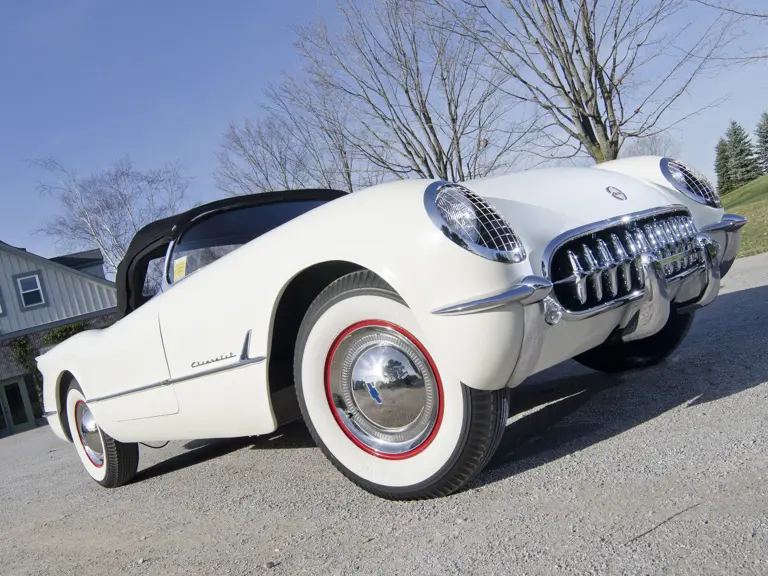
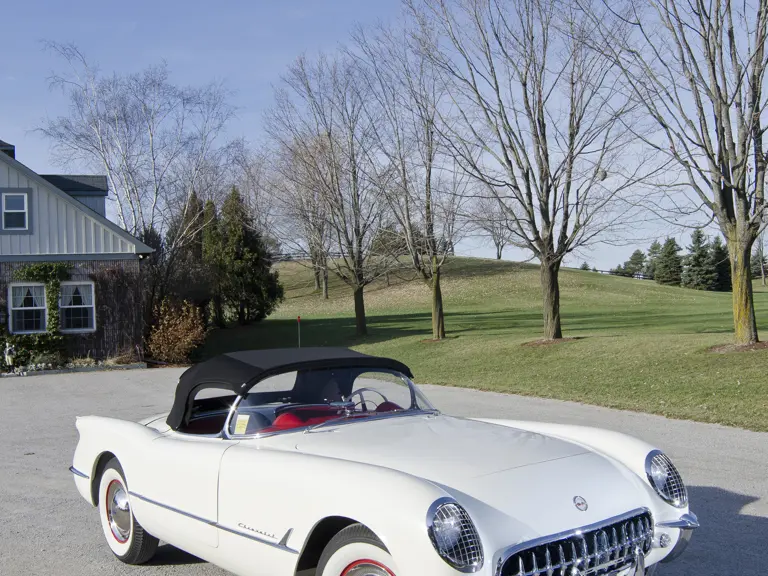
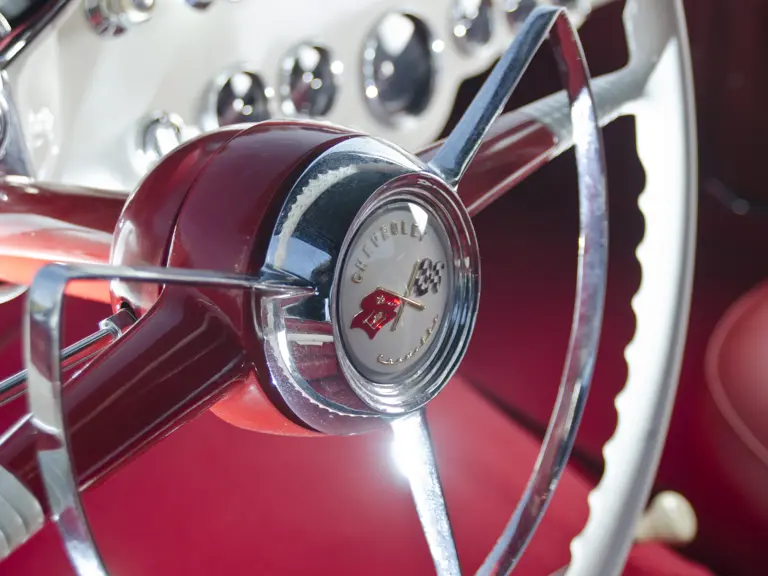


 | Phoenix, Arizona
| Phoenix, Arizona

